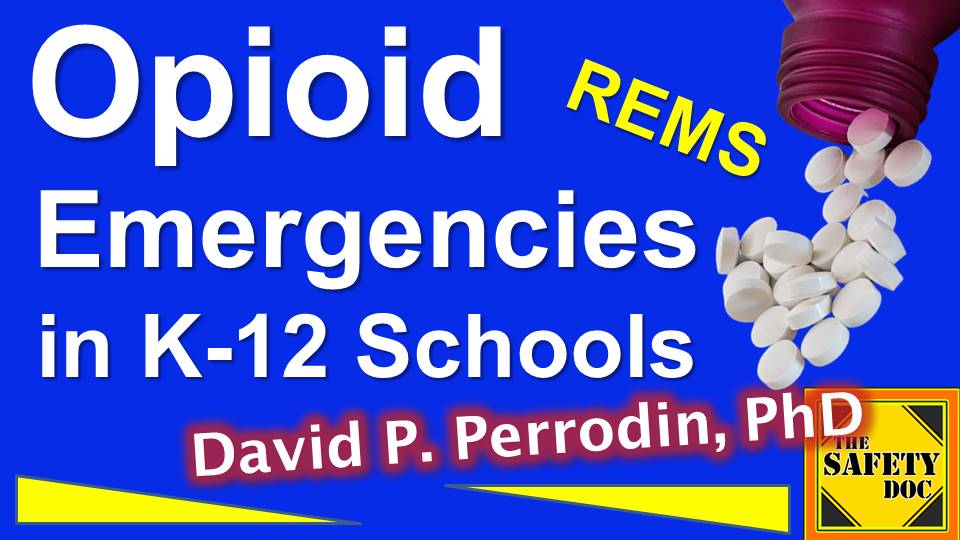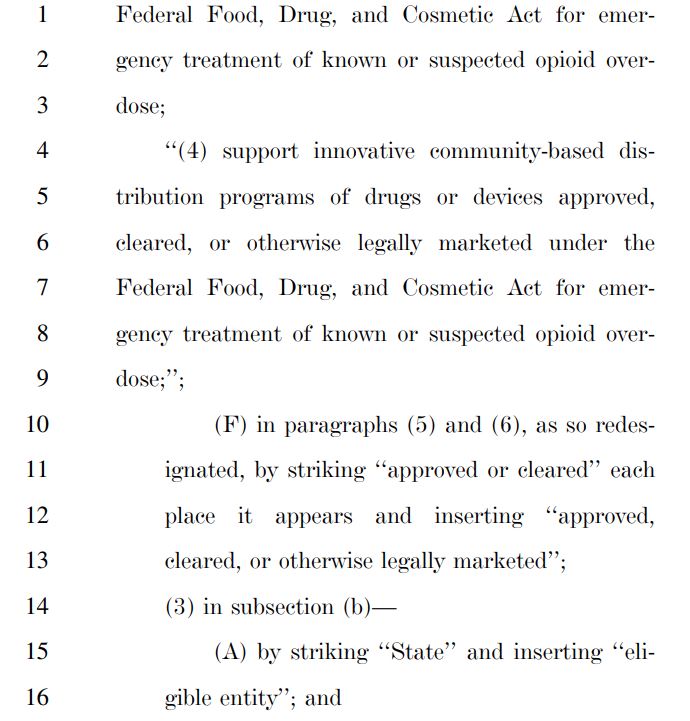Opioid Emergencies in K-12 Schools | Community and Legal Considerations | SDP199
On September 7, 2022, Wisconsin Senator Tammy Baldwin introduced bill S.4794 – Naloxone Education and Access Act (NEAA). This bill reauthorizes through FY2027, expands eligibility for, and otherwise makes changes to a grant program that supports access to medications that reverse opioid overdoses (e.g., naloxone). What might this mean for K-12 schools?

DIRECT LINK to MP3 of this Episode: https://tinyurl.com/SDP199-AUDIO
WHAT IS AN OPIOID? Opioids are a class of drug prescribed by doctors to treat moderate to severe pain. Common types of opioids are oxycodone (Oxycontin), hydrocodone (Vicodin), morphine, and methadone (REMS, 2022).
OPIOID USE DATA. According to the 2017 Final Report of the President’s Commission on Combating Drug Addiction and Opioid Crisis: In 2016, an estimated 239,000 adolescents aged 12 to 17 were current misusers of pain relievers (1.0% of adolescents), and 631,000 young adults aged 18 to 25 misused pain relievers in the past month (1.8% of young adults) … Among adolescents aged 12 to 17, 152,000 (0.6%) had a pain reliever use disorder in the past year, and 291,000 young adults aged 18 to 25 (0.8%) and 1.3 million adults aged 26 or older in 2016 (0.6%) had a pain reliever use disorder in the past year (p. 24).
OPIOIDS IN SCHOOLS. Opioid use and overdoses are increasing in schools. In addition to user-exposure, second-hand exposure also poses risks, especially with fentanyl, a synthetic opioid, which is 50 to 100 times more potent than morphine (REMS, 2022). Per EducationWeek, “Citing concerns about student opioid use—and fentanyl specifically—a growing number of districts have equipped schools with naloxone, a drug that temporarily reduces the harmful effects of overdoses. The Los Angeles Unified School District became the latest to do so last month when it said it would stock the drug, and train qualified staff to use it, as part of a multiprong response to a “devastating epidemic of overdoses that are all too common in Los Angeles. [Other] districts—from Des Moines, Iowa, to Denver— have also stocked naloxone in recent years, some empowered by changes in state laws that make it easier to do so.” (Blad, 2022).
SENATOR BALDWIN’S BILL. The bill would amend Section 545 of the Public Health Service Act and bring federal-level clarity and guidance to states regarding who can dispense reversal medication, where it can be placed, training, and immunity for using it in an attempt to benefit a suspected overdose person. Specifically, the NEAA would strike “for pharmacists to dispense a drug or device approved and cleared” and insert “that increase access to drugs and devices approved, cleared, or otherwise legally-marketed.” In other words, reversal drugs would be available to community-based distribution programs and there would be some type of “standing order” allowing for non-medical personnel to administer the reversal drug. Standing orders make naloxone available without a prescription in all 50 states, D.C. and Puerto Rico, though those policies vary by state. But, converting naloxone to Over-The-Counter may result in the loss of insurance coverage and an increase in out-of-pocket expenses, per drug producer Emergent.

CONSIDERATIONS FOR SCHOOLS. For some educators and community members, Naloxone on campus will signal a defeat against the invasiveness of opioids. Once Naloxone is stashed in AED cabinets – it’s there forever. Others will have more favorable perceptions that might center on saving lives. How will schools integrate opioid awareness and overdose prevention along with other alcohol and other drug (AOD) programs? Naloxone availability has been impacted by supply chain disruptions, but it’s typically about $25 per dose and there’s little incentive for someone to steal or misuse it. Naloxone could be placed in the AED cabinet, for example. A top concern for school officials will be legal ramifications of administering Naloxone. Would a student be permitted to administer it to another student? Who has discretion to use it? A guidance document from REMS (2022) states, “Identify, with general counsel, and inform the campus community about state Good Samaritan laws that provide immunity from arrest, charge, or prosecution for certain drug offenses for a person experiencing an overdose — or witnessing another person experiencing an overdose — who seeks medical attention.” So, it’s ultimately placing the risk upon the local board of education and the school’s insurer. Hopefully, Senator Baldwin’s proposed bill, or others like it, will align Naloxone with the standard for a non-trained person to be able to use a publicly-available AED to attempt to benefit a person encountering a heart attack.
SOURCES: Blad, E. (2022, October 10). Why Districts Are Stocking Naloxone in Response to the Opioid Crisis. Education Week.; Preparing for Opioid-Related Emergencies for K-12 Schools and Institutions of Higher Education. Readiness and Emergency Management for Schools (REMS) Technical Assistance (TA). (Retrieved 2022)
This is episode 199 of The Safety Doc Podcast published on 12-20-2022. This podcast and blog post represent the opinions of David P. Perrodin and his guests to the show. The content here is for informational purposes only. Please consult with your safety professional regarding the unique needs of yourself or your organization.
FOLLOW
- Watch this episode on “The Safety Doc” YouTube channel https://tinyurl.com/SDP199-VIDEO
- Listen to this episode on PodBean MP3 https://tinyurl.com/SDP199-AUDIO
- Apple Podcasts http://tinyurl.com/SafetyDocApplePodcasts
- SAFETY DOC WEBSITE & BLOG safetyphd.com
- Follow David & The Safety Doc Podcast on Twitter @SafetyPhD
- Email Dr. Perrodin [email protected]
Purchase Dr. Perrodin’s books
School of Errors – Rethinking School Safety in America
The Velocity of Information – Human Thinking During Chaotic Times
